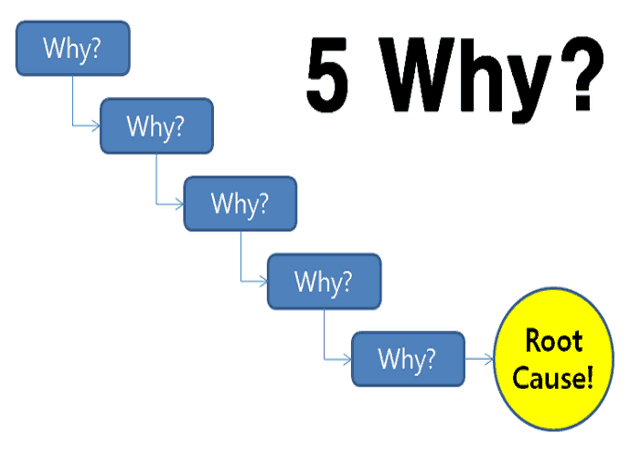Technique (5 Why) To Solve Complex Problems
Have You Ever Faced The Issue Of Not Finding A Solution To A Problem And Having To Put It Aside?
Face a problem for which you do not find a comprehensive solution and only do a few temporary things to solve the problem. You will face the same problem shortly unless you look for a solution to the situation radically.
Complex problems express deep problems but pay attention to the critical point that quick solutions are not always the right solution. It is better to investigate why issues arise.
One of the most important solutions in this field is the 5 Why technique. In this article, we are going to examine this technique.

What is technique five? Why?
One of Japan’s most prominent pioneers of the industrial revolution was Sakichi Toyoda, who first invented the 5-why technique in the 1930s. He was one of the owners and founders of the Toyota company. The method he created in the 1930s was widely used by large organizations forty years later in the 1970s. So that today Toyota itself uses this solution for various problems.
The idea presented by Toyoda is based on the observation hypothesis of go and see. In the sense that decision-making is done based on a more profound understanding that results from the processes and conditions in practice, instead of making decisions based on assumptions raised by different people and thoughts that are presented under the influence of the opinions of the board of directors. The 5 Whys technique only works best when you get the answers you are going to get from people who have touched and experienced the products.
An example of the five why technique
To clarify the issue, pay attention to the following example:
The client avoids paying for the guidance you have prepared for him. Here are five reasons as follows:
- Why? The delivery of the manual has been delayed, so the manual is no longer applicable.
- Why? The release time has taken longer than the customer required.
- Why? For some reason, the person responsible for preparing the guide could not provide the documentation to Pagina.
- Why? The devices or software that were supposed to be used to prepare the guide have crashed.
- Why? There was a lot of work to be done, so Paginara didn’t have enough time to prepare the guide.
- Solution: You need to hire another page layout to shorten the user manual preparation time.
Time to use the tool
You can use the above technique to identify problems, improve quality and solve problems. However, the above method performs better for medium and almost hard problems. For complex issues, you should review the troubleshooting process to identify the cause of the problem. The five why technology can help you get to the root of the problem.
So whenever the system or methodology is not working correctly, you can use the mentioned method before using a more complex solution. The simplicity of the above technique makes it very flexible so that it can be combined with other solutions. For example, it is possible to use the above process in the six sigma quality improvement method.
How to use the five why technique?
The method of using the above technique is simple. Whenever there is a problem, you only need to ask why to get to the root of the issues and find a solution for them. It is necessary to explain that the above method is insufficient to provide a solution and helps evaluate and prevent similar problems. Assessment and prevention include actions and solutions that help to prevent the problem from occurring again and are not supposed to provide a temporary solution; when you ask yourself why you should look for an answer.
This answer may be a set of factors that happened and are not the only events that are likely to happen. The above approach made the five why technique not limited to inference and prevented possible ambiguity. The above process should continue as long as you are sure that you have identified the root cause of the problem and there is no hidden point left.
Important and key points
The above technique begins with the question of why—the five why strategy is a simple and practical approach to identifying the issues’ roots. The above method can be used to identify and solve problems and improve the quality of AH.
This method should continue until the cause of the problem is known; then, you can provide a solution to prevent the error from occurring twice. However, you must make sure that the answers are entirely in line with reality. Otherwise, you have to repeat the why question again.
However, do not forget that the above technique is ideal for simple and relatively tricky problems. For more complex issues, you should use other solutions.

